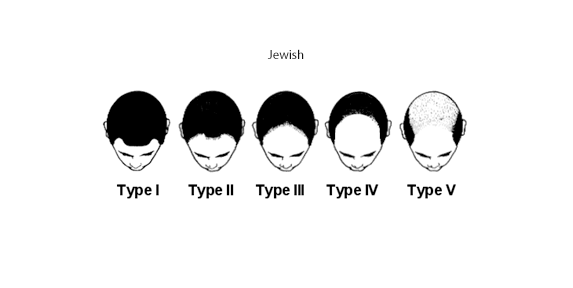Platelet Rich plasma treatment, how it works !
Platelet-rich plasma, or PRP, treatments have become invaluable for treating orthopedic and sports-related injuries. In fact, PRP therapy is used in a wide variety of medical specializations today to help patients heal faster and avoid more radical or invasive treatments.
Essentially, PRP is blood plasma that contains a high platelet concentration.
To create the PRP for treatment, a small quantity of the patient’s blood is drawn. Next, the whole blood is separated in a centrifuge to isolate layers of red blood cells, platelets and white blood cells, and plasma. The platelet and white cell layer is then isolated and centrifuged again to isolate the platelets. Finally, a small amount of plasma is added to the platelets to create the injectable PRP.
The manner in which the PRP is used depends on the specific application. For sports medicine and orthopedic treatments, the doctor injects the PRP into specific locations, based on the nature of the injury or damage. For hair procedures the PRP is injected on the scalp.
How do PRP treatments improve healing?
Platelets contain over 30 bioactive proteins that are used in the healing of human body tissue. In addition, they secrete seven protein growth factors that trigger the process of wound healing. Finally, PRP contains three types of proteins that allow cells to adhere to one another, another critical process of healing.
The various processes through which PRP treatments activate healing are highly complex. In the simplest terms, PRP injections activate the same processes the body would normally use, but amplified many times over.
For example, platelets tamp down inflammation cells and enhance cellular growth, while growth factors activate the healing of bone,vessels and soft tissue.
How does it work with hair?
PRP therapy for hair loss is a three-step medical treatment in which a person’s blood is drawn, processed, and then injected into the scalp.
PRP therapy process
PRP therapy is a three-step process. Most PRP therapy requires three treatments 8 weeks apart.
Maintenance treatments are required every 6-12 months.
Step 1
Your blood is drawn — typically from your arm — and put into a centrifuge (a machine that spins rapidly to separate fluids of different densities).
Step 2
After two spinning proceduresabout 8 minutes in the centrifuge, your blood will have separated into in three layers:
- platelet-poor plasma
- platelet-rich plasma
- red and white blood cells
Step 3
Scalp anaesthesia will be applied for the treatment of te concerned areas. The platelet-rich plasma is drawn up into a syringe and then injected into areas of the scalp that need increased hair growth.
PRP for hair loss side effects
Because PRP therapy involves injecting your own blood into your scalp, you aren’t at risk for getting a communicable disease.
Still, any therapy that involves injections always carries a risk of side effects such as:
- injury to blood vessels or nerves
- infection
- calcification at the injection points
- scar tissue
There’s also the chance that you could have a negative reaction to the anesthetic used in the therapy. If you decide to pursue PRP therapy for hair loss, let your doctor know in advance about your tolerance to anesthetics.
Risks of PRP for hair loss
Be sure to report all medications you’re on before the procedure including supplements and herbs.
When you go for your initial consultation, many providers will recommend against PRP for hair loss if you:
- are on blood thinners
- are a heavy smoker
- have a history of alcohol or drug misuse
You might also be rejected for treatment if you’ve been diagnosed with:
- acute or chronic infections
- cancer
- chronic liver disease
- chronic skin disease
- hemodynamic instability
- hypofibrinogenemia
- metabolic disorder
- platelet dysfunction syndromes
- systemic disorder
- sepsis
- low platelet count
- thyroid disease
How much does PRP for hair loss cost?
PRP therapy typically consists of three treatments in a 8 week period, with maintenance treatments every 12 months.
The price typically ranges from $1,000–$1500 for the initial three treatments, with one injection at $400 or more.
Many insurance plans consider PRP for hair loss treatment to be cosmetic and don’t cover any of the costs of the treatment. Check with your insurance provider to see if PRP therapy is covered for you.
Analysis of scalp condition
During the intake the doctor will evaluate the scalp. Depending on the cause of hair loss, there could be some advises given to improve the scalp condition before any treatment starts.
Some pictures of the scalp will be taken with a special camera with magnification propertiesto analyse the scalp and hair condition eg. shafts thickness, quality and quantity per area. Special attention will be taken to the concerned areas. An Ebling-Hook scale will be appointed that matches best your current condition.
Goal is to reduce the Ebling score with at least one grade (meaning a better condition). There will be some pictures taken of the head/scalp to see the before and after conditions in order to see your progression.
All images and pictures taken will be carefully kept in your medical records and will not be used for promotional programs.



Takeaway
If you’re concerned about hair loss, you have a number of options including medication like Rogaine and Propecia, along with hair transplant surgery. Another consideration is PRP therapy.
Although there’s limited clinical proof that PRP for hair loss works, there are many who believe that PRP is a safe and effective way of reversing hair loss and stimulating new hair growth.
Talk to your doctor to see which treatment or combination of treatments is the best choice for you.



